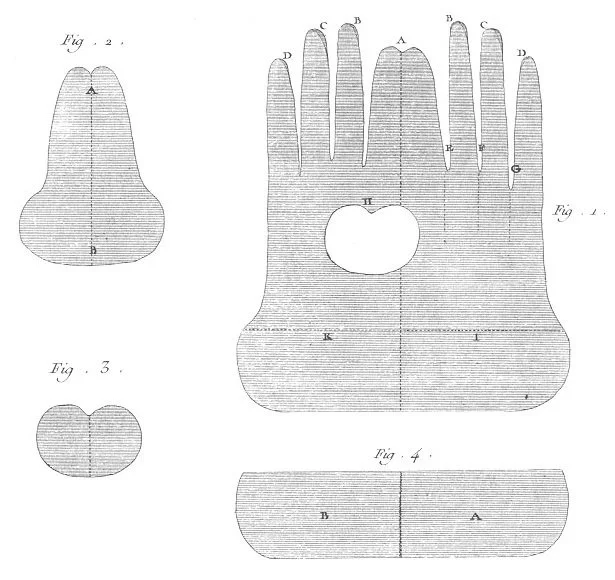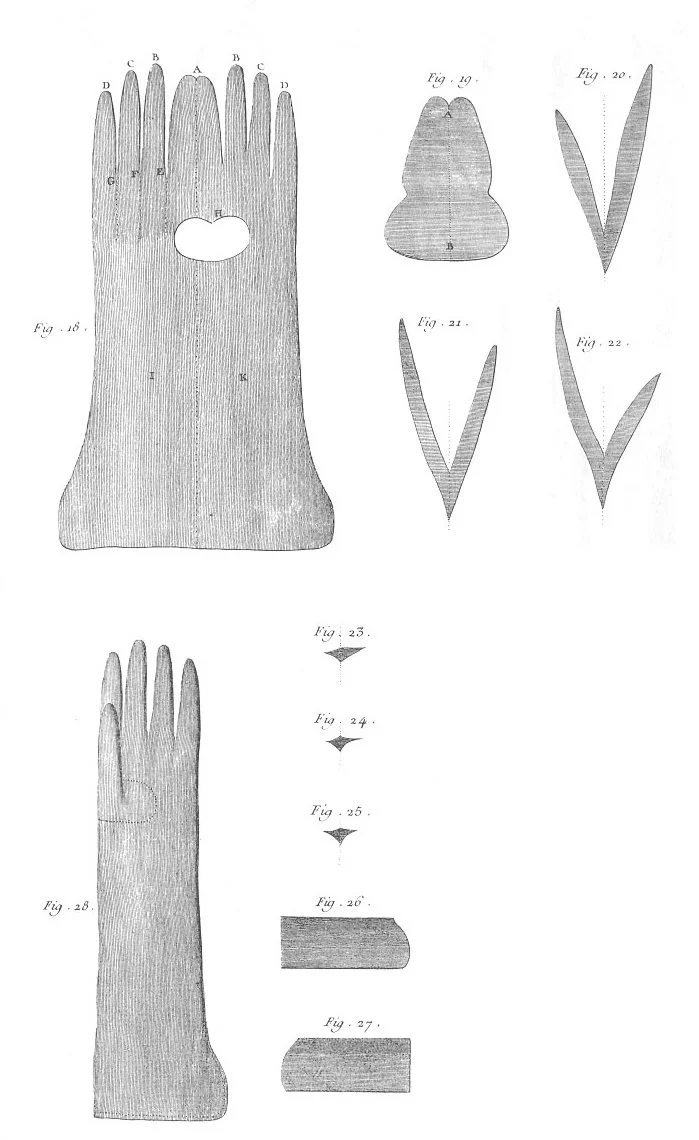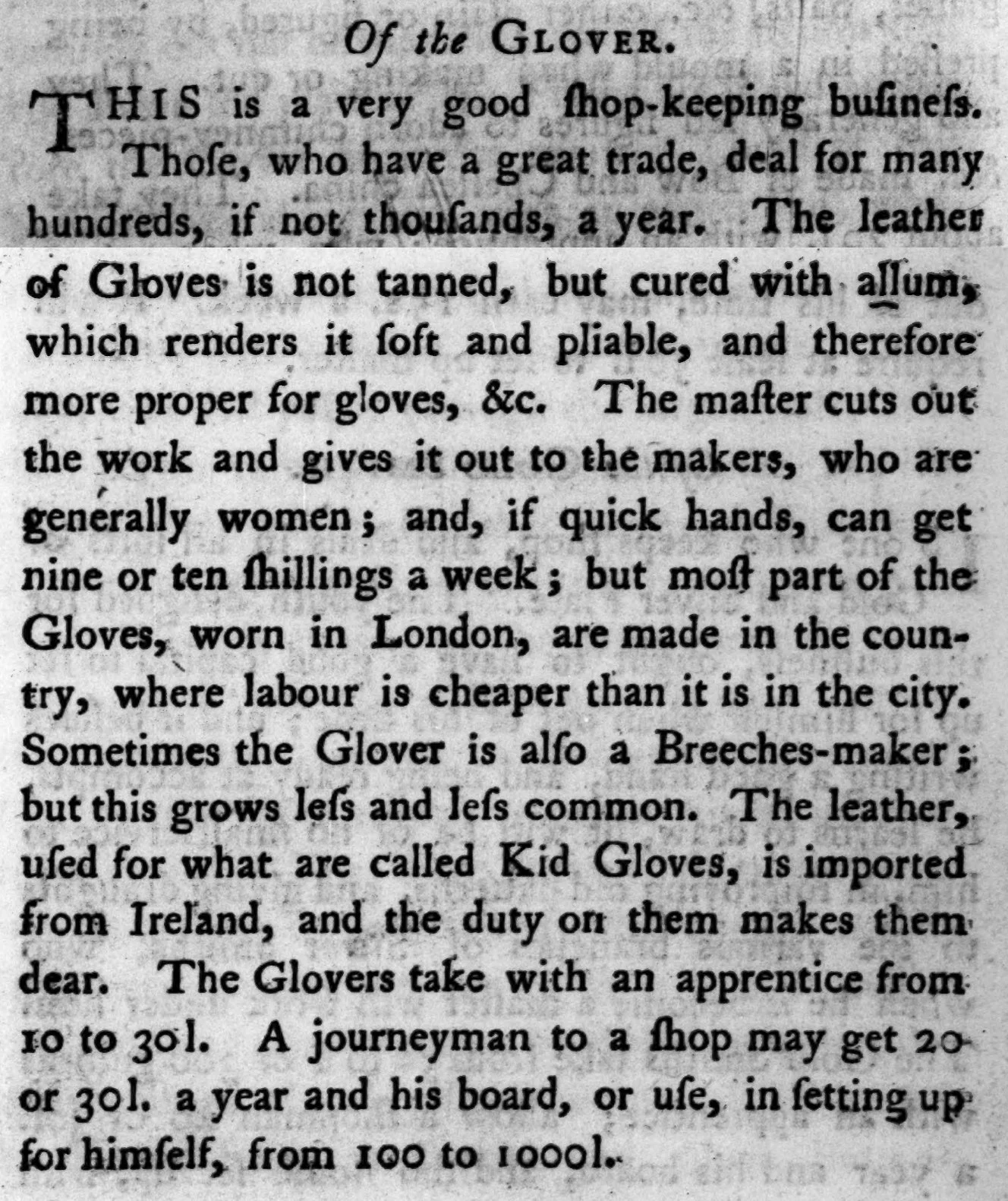Men’s leather gloves in the 18th century
The Encyclopédie ou Dictionnaire raisonné des sciences, des arts et des métiers (1765) has a section on 18th century gloves and how they were made:
Fig. 1. Trank (main piece) of a man’s glove. A the index finger, B the middle finger, C the ring finger, E F G the back slits; H the hole for the thumb; I the outer side (the back) of the hand; K the inner side (the palm) of the hand.
Fig. 2. The thumb. A the top; B the side near the opening.
Fig. 3. The piece cut out for the thumb hole.
Fig 4. The lining pieces of the upper part (the cuff) of the glove. A. The top piece; B. The bottom piece.
Fig. 5, 6, & 7. The fourchettes.
8, 9, & 10. The quirks.
11. Simple glove, finished.
12. English-style turned-up glove. A, the turned-up cuff.
13. Embroidered glove, finished. A the embroidered turned-up cuff; B the embroidered thumb hole.
Fig. 18. Trank of a falconer’s glove. A the index finger, B the middle finger, C the ring finger, E F G the back slits; H the hole for the thumb; I the outer side (the back) of the hand; K the inner side (the palm) of the hand.
19. The thumb. A the top; B the side near the opening.
20, 21, & 22. The fourchettes.
23, 24, & 25. The quirks.
26 & 27. The linings of the upper part and the lower part.
28. The falconer’s glove, finished.
Additional Resources
This site contains affiliate links for which I may be compensated
Terminology: Fourchette, quirks and other glove terms
Fur and Leather Garments in 18th and 19th Century New England
Of the Glover.
Perspectives on the glove-makers’ trade from The London Tradesman (1747) and The Parent’s and Guardian’s Directory (1761).





